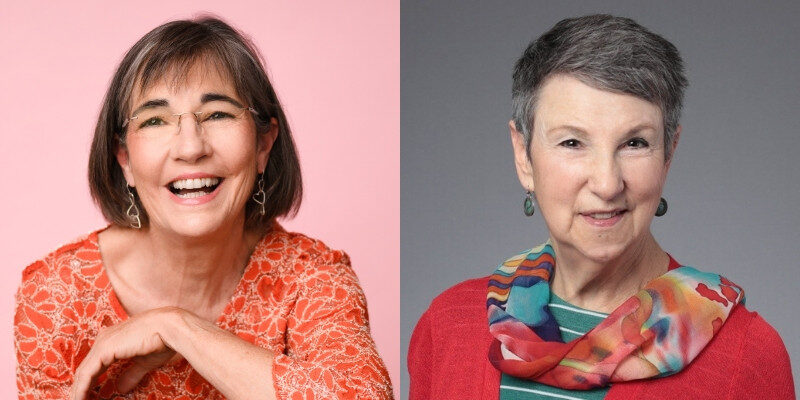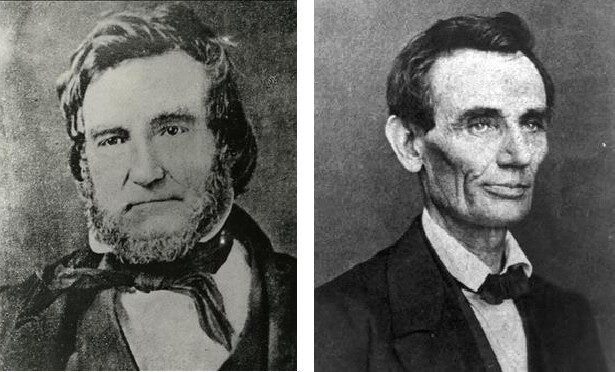Knute Berger has been a fixture in the Northwest publishing world for decades.
The Seattle-born writer, editor and historian has launched magazines and newspapers, penned two books and written countless columns exploring the intriguing places where regional history and heritage meet current politics. Along the way, he became a local television star.
Since 2007, Knute Berger (pronounced Keh-Newt Ber-jer) has been editor-at-large for the online nonprofit news site, Crosscut.com. The move to Crosscut from his longtime gig as editor-in-chief of the Seattle Weekly not only allowed him to focus more on writing but gave him the freedom to follow his curiosity.
“What intensely interests me is history, place and identity, and how they influence our politics and culture,” wrote Knute in Crosscut. “There’s a rub here between past and present, between tradition and reinvention that makes it exciting…”
After Crosscut and KCTS 9 merged as part of Cascade Public Media, he added writing and hosting the Mossback’s Northwest TV show on KCTS to his long list of accomplishments.

Why Mossback? More on that later.
Despite a lifetime of meeting new challenges head-on, Knute never imagined himself as the star of his own television series.
“One of the editors came to me and said, ‘People think you might be really good doing a show.’”
Knute’s immediate reaction: You’re nuts!
Nevertheless, they forged ahead, starting with two video producers using a small digital camera. “We found a conference room to set up ‘Mossback’s Den,’” recalls Knute. “I brought in books and artifacts, and we just started doing stuff.”
Mossback’s Northwest offers informative yet entertaining glimpses into our region’s historical and cultural curiosities and wonders. The three-to-seven-minute shows fill the slots between PBS programming, and can also be viewed online at kcts9.org, Crosscut.com and YouTube.
The show became a hit and now there is a three-story high picture of Knute “Mossback” Berger on the KCTS building at 4th and Mercer.
The show’s popularity boosted Knute into the realm of local celebrity. People began stopping him in the street or shouting out across the grocery aisle, “Hey Mossback. Love the show!” Even after the pandemic struck: “The mask doesn’t fool anyone,” remarks Knute. In part, his telltale beard peeking out gives him away.
Knute describes the show as “one of those things with a lively appeal to anybody, young or old, with an interest in Northwest history. I receive lots of mail from teachers who use it in class.” Knute, who believes there is not enough history taught in schools, is thrilled by that turn of events.
“The first and only time somebody has asked me for an autograph was a six-year-old—a mad Mossback fan,” he adds. The show’s broad appeal across generations makes him happy.
The fifth season of Mossback’s Northwest wrapped up in February, but you might still catch reruns on KCTS 9 and, of course, the episodes live forever online.
He feels lucky to have a “dream team,” including producer/ director Stephen Hegg, photographer Resti Bagcal and editor Dave Quantic.
“It’s not quite the ‘out-of-the-hip’ project that we were doing at first.” The team has always focused on interesting sets, images and artifacts to illustrate the stories, but this season they ventured out more to shoot on location.

And what about those quirky costumes and hats? “Those are my clothes,” declares Knute. “It’s stuff I bring from home.”
The show sounds like a wish come true for a self-proclaimed history nerd like Knute. He uncovers stories that people may not know about or looks at unique angles they may not have heard before. He thinks of the topics as something akin to a curio cabinet, although more substantial. After a lifetime studying Northwest history, deciding on a story can be like plucking a fascinating relic out of his memory banks.
A few Mossback’s Northwest titles include: The Odd Thing About D.B. Cooper; The Palouse Cowboy Who Invented John Wayne; Kingdome Come, and Gone; The Northwest’s Most Notable Hoaxes; Northwest Dog Heroes; Sea Serpents of the Salish Sea; and Petticoat Brigade, which explores the mad scheme to bring marriageable women to Puget Sound’s frontier. A Tinseltown version of this story of the “Mercer Girls,” who were brought to Seattle for the bachelor lumberjacks, was the basis for the 1960s TV show, Here Come the Brides.
A Mossback podcast was added this year as a companion to Mossback’s Northwest. The podcasts, hosted by Sara Bernard, feature interviews with Knute that include details, factoids and analysis that didn’t make it into the TV show.
In addition to his work with Crosscut and KCTS, Knute has been a commentator on KUOW-FM and at public forums. Besides his work at the Seattle Weekly, he was founding editor and publisher of Eastsideweek, helped launch and guide the statewide Washington Magazine and served as editor-at-large for Seattle Magazine. His first job in the area after college was with a national startup magazine, Adventure Travel.
The diversity of his experience doesn’t stop with his work as editor, writing, launching publications or the TV show. Back in the mid-1970s, a writing assignment on time capsules led to a fascination with the subject. Knute explains that “I developed an odd expertise and was hired by the Washington State Centennial Commission to create a time capsule.” It resides in the rotunda of the State Capital in Olympia, part of an ongoing project—a series of time capsules that will be filled every 25 years for the next 400 years.

Another of Knute’s fascinating experiences came from writing the official history of the Space Needle for the iconic structure’s 50th anniversary. Between 2011 and 2012, he literally became the Space Needle’s writer-in-residence, setting up a desk on the Observation Deck where he interviewed people about their knowledge and experiences. The result is his book, Space Needle: The Spirit of Seattle.
His first book, Pugetopolis: A Mossback Takes on Growth Addicts, Weather Wimps, and the Myth of Seattle Nice, is a compilation of essays from his Mossback column. In the foreword, Tim Egan describes Knute as the region’s crank with a conscience, a contrarian thinker. Many Mossback columns comment on historical stories that have a contemporary relevance. He digs deep into context and doesn’t sugarcoat it. “You have to tell the whole story, to be willing to look at the difficult things.”
The Young Knute

Knute, who has two older sisters, was born in Seattle in 1953. They were raised in the same Mount Baker neighborhood where their father grew up, and all attended John Muir Elementary just like dear old dad.

As a third-generation Mount Baker resident, Knute was steeped in a sense of place—not only his own, but he was filled with stories of his father’s boyhood in the same neighborhood. “We even had a paper route that covered some of the same turf,” recalled Knute in an interview.
It was a multigenerational life in “a landscape that felt like home.” Knute is the third of four Knutes, including Knute’s son. Each was given a nickname to go by; those who know Knute well call him Skip.
His parents met while at Yale Medical School. His father was becoming a surgeon, his mother getting a Master’s in Nursing. They married just as World War II was breaking out. His father enlisted, then served as a doctor and captain in the Army Air Force.
After the war, the couple traveled for medical work, but came back to Seattle and settled in the family neighborhood. Both became deeply engaged in heart research. For 20 years his father worked as head research pathologist for what is now the Hope Heart Institute. His mother was the Institute’s administrator.
“My father had a laboratory at home and our basement was full of medical stuff and tissue samples,” reveals Knute. “He even had a piece of Bobo’s heart for research.” (Bobo was Woodland Park Zoo’s famous gorilla.) “My father was a bit like a mad scientist. But he also created art.” In addition to his work as a surgeon and research scientist, his father was a medical illustrator. In retirement, even with failing eyesight, he continued as an artist.
“My mother was doing medical administration but was also a poet. She would get up at four a.m. to write poetry and she studied with some of the great northwest poets.” Knute feels lucky to have been surrounded by people who were interested in science, education and history— “people with tremendous curiosity.”
Knute’s childhood home was filled with books, artifacts and collections of tidbits touched by history. “There was a real appreciation in our house of the past, and that was a big influence.” Knute says his life as a history nerd started young. In fact, his first book, an illustrated history of the civil war, was written in the third grade.
By the sixth grade, Knute decided he wanted to become a writer. His passion was biographies, but he soon became enamored by the poetry of Edgar Allan Poe. One day he announced to his mother that he wanted to become a poet. She said, “You know poets don’t make much money. You might consider journalism.” Lucky advice for Knute’s many fans.
The household contained a rebound first edition by Mark Twain, which Knute describes as “sketches, short stories and columns for papers about his journalistic experiences that are really hilarious.” That Mark Twain book made the idea of journalism intriguing.
Knute first dipped his toe into the world of journalism by taking a class in junior high, but it was a bust. “This is B.S,” he told himself and dropped out. But when he went to Lakeside High School, he discovered that working on the student newspaper could be anarchic fun, something more creative than the grind of a daily newspaper. “I was made an editor and was writing columns,” says Knute. “And I’m still doing pretty much the same thing now.” You might say the roots of Mossback were created at Lakeside.
Knute went to the nearly new Evergreen State College in Olympia and helped start that school’s newspaper, a process he loved doing.
His time at Evergreen served up another crucial experience. As part of their studies, he and a couple of buddies took a van trip across the country to write, draw and photograph what they found.
“I decided to become a kind of roving correspondent for The Cooper Point Journal, the school’s newspaper,” reported Knute in Crosscut. He decided if he could meet and interview anyone in America, it would be Kurt Vonnegut Jr. He actually succeeded in that quest, although the saga of how he managed it was far more impactful than the actual interview. He wrote up the story “using a 1939 Royal typewriter that I had lugged along on the trip—really, the fourth companion in that van…” and dutifully mailed the article back to the school paper. Then the trio ventured forth on the rest of their journey.
By the time he returned to Evergreen a month or so later he found that not only had his piece run on the front cover, but he had become a campus celebrity. “People kept coming up to me, ‘Are you the guy that wrote the Vonnegut story? Are you one that tracked him down?’ That was the first time I ever got such a response from the audience,” recalls Knute. Even then he’d assumed the role of contrarian—specializing in provocative topics that challenged people’s beliefs. The Vonnegut story “made people happy instead of mad.” It also got him the job of editor of the paper. The entire experience allowed Knute to live out some of that Mark Twain fantasy he’d developed as a boy.
After college, Knute devoted himself to the idea of specializing in starting up publications. “That’s how I got David Brewster’s attention.” David Brewster is founder of the Seattle Weekly, Crosscut.com and Town Hall Seattle, a nonprofit cultural center. Brewster recruited Knute first for the startup Eastsideweek, then for the Seattle Weekly and most recently when launching Crosscut.
On a Personal Note…
Knute and his his wife, a psychotherapist, live in Madison Park at the Edgewater apartments on Lake Washington. His two kids and four grandchildren all live in the area.
At 17, “my eldest granddaughter is a wonderful artist.” The other three grandkids are around kindergarten age. “They are a blast to play with,” says Knute. He’s become quite adept at Legos, playing with unicorns and dinosaurs, and understands that “I will have to learn Minecraft to keep up with the kids.”
His sisters, who inherited the family creativity gene, also live in the area. Barbara is an artist, writer and children’s book author. Kari is a photographer and jewelry maker. She and her husband are into tugboats and the maritime life. Knute describes her as a true renaissance person.
At age 68, Knute loves his life and doesn’t intend to retire anytime soon. “In terms of enthusiasm, I feel as vigorous as I’ve ever felt. Physically, not quite as much. I can’t work those 16-hour days anymore.” Knute’s mother lived to 103 and let’s hope that, in addition to all that creativity DNA, he inherited her longevity genes. When he does retire, he sees himself spending a lot of his time as he does now, reading and writing, but will add more travel and leisure activities.
“I could travel fulltime for the rest of my life and never see all of the Pacific Northwest,” says Knute, who wants “to soak it all up.” He also plans to continue visiting world’s fairs. “I went to the Seattle World’s Fair when I was eight, then started going again as an adult. I’ve been to 10 and hope to make it number 11 early next year.”
With extra time, he would hang out more with his grandchildren. And “I’d continue working on the family history, what the ancestors were up to… create and organize the records to pass it along to the kids and grandkids.”
He would also spend more time in nature. “I like walking and hiking, going places like Lake Quinault and Kalaloch. I’m a birdwatcher, too. Spending time in nature is so replenishing, so nourishing.”
As a final note to our readers, Knute believes there is still so much history to uncover. “What keeps me going are the different layers to peel off. We can’t sanitize history. We should all take a close look…It is a thrilling time to be paying attention to history.”
Thanks, Knute. See you on TV.

What’s a Mossback?

Back in the early 2000s while editor-in-chief of the Seattle Weekly, Knute started calling his column Mossback. It all began when he came across a collection of essays by the region’s early pioneers. He learned that after railroads opened the area to more settlers, some “newcomers” ridiculed the original pioneers that had come by ship or covered wagon, calling them “Mossbacks.” Mossback is a term used to describe an old-fashioned person, derived from the name given to sluggish fish that dwell in still waters and accumulate the appearance of moss on their backs. Knute, who was born and raised in Seattle and has lived in the area for most of his life, decided to embrace the epithet and elevate it from insult into a proud acknowledgement. Calling himself Mossback is a way of declaring local loyalty and to claim regional identity. “I love it here,” says Knute.
“Whether you are born here, moved here 100 years ago or 100 days ago, to me, if you are somebody who feels that immediate connection with the place—or a growing connection that allows this place shape you—you are a mossback.”

















